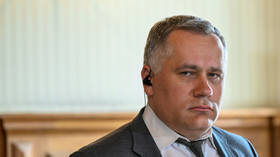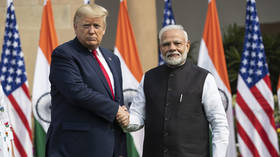Trans Pacific Partnership - The Devil is in the details

The world’s largest free trade zone encompassing 40 percent of world trade leaves Europe amongst those trailing in its wake. The benefits for TPP member states? The proof of the pudding will be in the deal once published.
"This is a once-in-a-lifetime agreement, a once-in-a-lifetime moment of decision. You are either in or out, and we choose to be in because there is simply too much to gain.” Canadian Prime Minister Stephen Harper on the TPP
“After six years of negotiations, a final Trans-Pacific Partnership agreement has been reached in Atlanta. Check your pacemakers, trade policy works. This is about as exciting as it gets in our world.” Daniel J Ikenson, Cato Institute.
At the risk of upsetting the rather voluble, trigger finger twitchy end of the social media spectrum, I have to admit that when it comes to trade agreements, I generally don’t scaremonger easily. Moreover, when it comes to people called Joseph, I’ll gladly contend that Schumpeter trumps Stalin every time. Schumpeter’s famous term was “creative destruction” - new innovations must be enabled through destroying legacy processes. Creative destruction remakes economies when governments don’t hinder innovation. Concerned by electoral prospects, average politicians are loathe to let legacy industries create unemployment. Thus trade agreements are often agents of creative destruction, enabling the likes of New Zealand’s modern hypercompetitive dairy industry to export its product where other nations like Canada have maintained subsidized supply approaches.
That said, trade agreements optimistic whiff of ‘win-win’ cross border trade delivering economic growth, enable politicians to demonstrate leadership. Canada’s Stephen Harper hopes his role clinching TPP will aid his re-election on October 19, succinctly noting: “We have chosen a future of participation over isolation.”
Free(r) trade amongst a dozen Pacific nations is a huge achievement. Talks began so long ago, Hillary Clinton supported it as US Secretary of State (will she now reverse her recent anti-enterprise tantrums to support TPP?) Nevertheless, it’s difficult to deliver blanket support for a bill developed in secret. This has motivated scaremongers, including those eager to stifle any evidence for Adam Smith’s “invisible hand” of growth. There are concerns about the international tribunal: “Investor-State Dispute Settlement” accords. However, they already exist in over 3000 trade agreements, perhaps most notably the North American Free Trade Agreement (NAFTA).
LISTEN MORE:
Nobody wants the multinational blob controlling courts just as no sane individual believes enormous government delivers economic optimization. No blob works well. Pre-existing corporate socialism where multinational bureaucracy mixes with multinational corporations such as the European Union brings together 28 nations, broadly strangling economic growth in all of them. However the international investment regime is based on pragmatic concepts overall. In 2014, adoption of the Mauritius Convention broadened the application of the United Nations Commission on International Trade Law (UNCITRAL) Rules on Transparency, substantially increasing the openness of ISDS proceedings. Until TPP is unsealed it’s impossible to discern how TPP will apply ISDS but as per NAFTA, there is a paucity of evidence that, for instance, the Mexican government has been reduced to rubber stamping US multinationals demands.
Nevertheless, TPP will likely prove frustrating for those who prefer unfettered competition and hence better deals for the consumer than the usual protectionist nonsense more cowardly governments are oft prone to deliver. Amidst the TPP’s 30 chapters, the Cato Institute think tank is already suspicious that the US has secured various tedious protectionist devices including a 30 year phase out for the 25 percent pick-up truck tariff (TPP generally phases in over 15 years).
TPP creates the largest trade bloc on planet Earth representing 800 million people of the Earth’s 7.3 billion citizens, all told that’s an enormous 40 percent of the global economy. China is not a TPP founder (yet). A long march to freedom is essential before Beijing’s politicians can embrace the openness required for such a broad trade agreement. This has been palpably obvious of late as the Communist Party has flailed fruitlessly to defy, Canute-like, the ebbing tides of economic cycles.
Nevertheless TPP represents an agreement bringing together a trade bloc of growing economies significantly larger than the EU (circa 500 million citizens, under 33 percent of world trade) where even managed decline is proving a tricky task for Brussels’ preponderance of presidents. National TPP ratification may take several years but the direction of travel is clear.
- The 12 TPP Nations are: Australia, Brunei Darussalam, Canada, Chile, Japan, Malaysia, Mexico, New Zealand, Peru, Singapore, the United States of America and Vietnam.
The statements, views and opinions expressed in this column are solely those of the author and do not necessarily represent those of RT.














